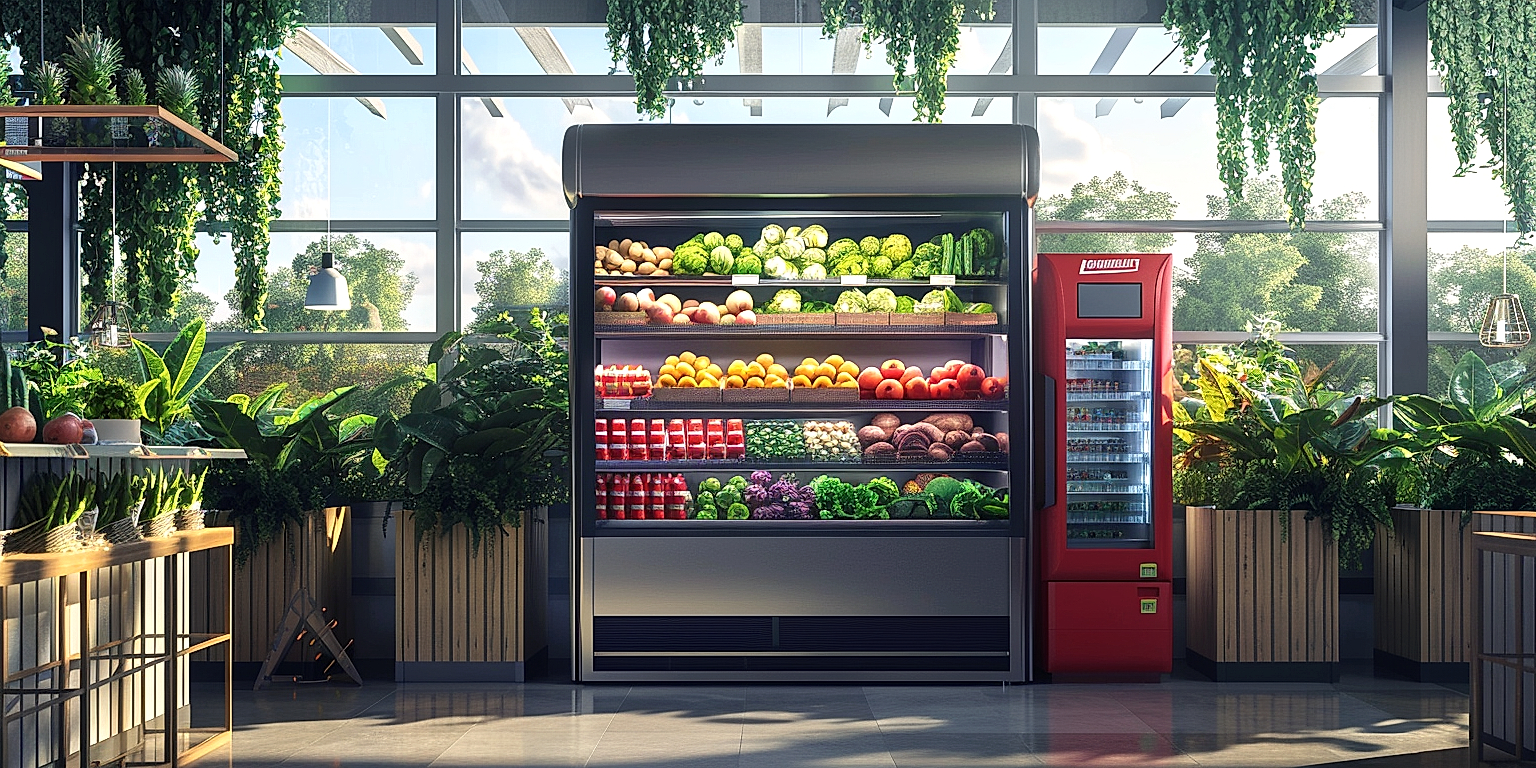In these unprecedented times, the rise of digital technology is reinventing the way we shop for groceries.
Retail sectors, notably the produce industry, are at the forefront of this change, embracing solutions for a safer and more convenient customer experience.
A striking development is the emergence of contactless shopping, ensuring minimal physical interaction for safety reasons.
It is a drastic yet necessary shift in operations to meet the ever-evolving demands and expectations of consumers.
This blog will delve into practical tactics for achieving this transition smoothly and effectively.
As society continues to adapt, a valuable emphasis is placed on methods that address both public health concerns and efficient service.
Ways To Implement Contactless Shopping In Produce Retail
1. Introduce Online Shopping and Home Delivery Options
The evolution of the retail industry has become increasingly digitalized, and for good reason; it is necessary for businesses to adapt to the times and the changing preferences of consumers.
One such modification that is rapidly growing in popularity is the incorporation of online shopping and home delivery options.
This is particularly relevant in today’s world where a significant number of consumers prefer contactless shopping methods due to the ongoing global health crisis.
Offering online shopping and home delivery options for your produce retails can provide a convenient, time-saving shopping experience for your customers, while also aiding in the fight against the spread of the virus.
By getting on board with online shopping, you are providing a valuable service to those who may be unable to physically visit your retail location.
There’s zero contact involved, and customers can browse your entire inventory at their own pace, from the comfort of their own homes.
Including high-quality, detailed photos of your products can also add to the shopping experience, as it gives customers a more accurate idea of what they’re purchasing.
Furthermore, even after the pandemic has passed and things go back to ‘normal’, offering online shopping and home delivery services will only continue to increase your customer base.
This is because, despite the circumstances, convenience is always a top consideration for most consumers when choosing where to shop.
Remember, however, that if you decide to implement this system, the infrastructure and logistics surrounding order fulfilment and home delivery will need to be effectively managed.
This will often involve systems for packaging produce properly, timing deliveries to maximize freshness, and maintaining clear communication channels with customers throughout the delivery process.
Failure to efficiently manage these aspects can lead to a poor customer experience and negative feedback.
Investing in a robust e-commerce platform can greatly assist with these processes, ensuring customer satisfaction and repeat business.
Integrating online shopping and home delivery services into your produce retail business is a strategic move that could very well be the key to outperforming your competitors and meeting your customers’ evolving needs.
Undoubtedly, the digitalization of the retail industry is here to stay and your success may depend on how well you adapt to this new retail landscape.
2. Provide self-checkout machines in-store
The adoption of self-checkout machines within retail produce stores is a significant step towards the fulfillment of contactless shopping.
This method not only reduces human-to-human contact, but it also hastens the checkout process and improves the customer’s shopping experience.
By enabling customers to scan, bag and pay for their products independently, self-checkout machines empower customers to have more control over their shopping outings.
Properly implemented, self-checkout systems can greatly minimize queues, decreasing the potential for crowding, thereby making social distancing more feasible in-store.
There is a financial advantage for retailers as well as self-checkout machines require less staffing, which leads to a reduction in overhead costs.
However, the implementation of self-checkout machines is not without its challenges, as shoplifting can become more prevalent.
Among the ways to curb this issue is the incorporation of weight sensors and cameras within the checkout area to deter potential thieves.
Moreover, self-checkout machines can present difficulties for some customers who are not familiar with the technology or do not have access to certain forms of payment such as credit or debit cards.
By providing adequate support and guidance for these customers, retailers can ensure that the transition to this new technology is as smooth as possible.
Additionally, it’s essential that retailers provide the self-checkout option alongside traditional cashier-led checkouts to cater to all customer needs and preferences.
Technological issues, like machine errors and breakdowns, can also pose challenges to the smooth operation of self-checkouts.
However, with regular maintenance and updates, these problems can be prevented or swiftly addressed when they occur.
To further enhance the self-checkout experience, retailers might consider implementing features like automatic coupon redemption and suggestions for related products based on the customer’s current selection.
With careful planning and execution, self-checkout systems can significantly contribute to the creation of a contactless shopping environment in produce retail stores.
All in all, equipping retail produce stores with self-checkout machines stands as a prudent step towards the implementation of contactless shopping.
It requires strategic planning and attention to detail from retailers, but the end result can positively impact both the customer experience and the business bottom line.
3. Install Automatic Door Openers and Sanitation Stations.
Implementing contactless shopping in produce retail can extend beyond in-store technology and online strategies, with simple adjustments to the store’s physical layout and features playing a significant role.
This can be achieved effectively by installing automatic door openers and sanitation stations throughout the store.
Automatic door openers, often used in supermarkets and retail stores, eliminate the need for customers to touch potentially contaminated surfaces, such as door handles or push-bars.
This technology works by sensing a person’s approach or activating upon a wave of a hand in front of a sensor, thereby minimizing physical interactions and promoting a cleaner shopping environment.
Implementing automatic door systems not only contributes to the ease of shopping but also aims to reduce disease transmission potential among customers.
Automatic door openers are an effective tool in ensuring a touchless shopping experience and reinforcing a store’s commitment to customer health and safety, particularly amidst the ongoing pandemic scenario.
Another critical element in fostering contactless shopping experiences is the establishment of sanitation stations.
Placed strategically, especially at the entrance and exit points, these stations allow customers to sanitize their hands and even trolley or basket handles at regular intervals.
Some retail stores have gone a step further by providing wipes or disinfectant sprays, enabling shoppers to clean items or surfaces before touching them, further reducing the risk of contamination.
Sanitation stations act as a constant reminder for shoppers to practice good hygiene, fostering an environment that is health-conscious and responsibly managed.
The combination of automated doors and sanitation stations can significantly limit the points of physical contact within a retail store.
Such initiatives demonstrate the retailer’s commitment to mitigating risks related to bacteria or virus transmission, thereby enhancing the consumer’s overall shopping experience.
Both automatic doors and sanitation stations can easily be incorporated into the store’s existing layout, proving to be a cost-effective contactless solution in the long run.
While these might appear as small measures, their impact on consumer perception and behavior can be quite profound, leading to the creation of a safer shopping environment.
It is crucial to keep in mind that while implementing these tools, efforts should also be made to continue educating customers about the importance of these facilities and how using them correctly can contribute to collective wellbeing and public health.
In the journey to implementing contactless shopping in produce retail, using Radio Frequency Identification (RFID) tags is one of the critical steps to consider.
RFID tags can play a central role in both inventory management and checkout processes.
This technology, when properly used, offers the ability to quickly and automatically identify and track tags attached to products, significantly alleviating the need for direct human contact.
It should be noted that RFID tags contain electronically stored information, which enables their use in contactless operations like inventory management and product checkout.
The tags can be read from several meters away, making them perfect for the present times when everyone is advised to maintain social distance due to the COVID-19 pandemic.
Furthermore, RFID tags do not need to be within direct line-of-sight of the reader to be scanned, providing huge versatility in their implementation.
An RFID system includes a tag, a read/write or only read device, and a host system application for data collection, processing, and transmission.
With such a setup, businesses can automatically log the entry and exit of goods from their stores, significantly reducing the need for manual labor.
In addition, leveraging RFID technology can help lower labor costs, enhance customer service, and increase sales while promoting a safer shopping environment at the same time.
At the checkout, customers can just walk past a scanner with their shopping, with the scanner automatically adding up the price of all items in their basket and charging their account through a mobile payment system.
It is important to note that while RFID technology can greatly assist in implementing contactless shopping, businesses still need to pay attention to its implementation challenges.
Some of these challenges include data privacy issues, initial implementation costs, and potential technology interoperability issues with legacy systems.
However, most of these challenges can be mitigated with proper planning and execution.
RFID technology, despite its potential challenges, still offers immense potential for businesses looking to implement a contactless shopping model, especially in produce retail, where quick turnaround and high volumes are commonplace.
Implementing RFID technology should be viewed as a strategic move towards ensuring customer safety and satisfaction, as well as efficient inventory management and cost savings.
5. Implement mobile-payment and digital wallet systems
Mobile payment and digital wallet systems have taken center stage in the past few years, making transactions faster, easier, and more secure.
In the context of contactless shopping, these payment methods offer a viable alternative to traditional cash or credit card transactions, thus limiting the need for physical contact.
Many retailers across the globe have already embraced this trend, leveraging technology to provide a more convenient and safer shopping experience for their customers.
For retail businesses, specifically those in the produce sector, implementing these systems could be of significant benefit.
Primarily, they reduce the risk of germ transfer, which is crucial in this pandemic era. Moreover, they provide an enhanced customer experience by speeding up the checkout process and removing the need to carry cash or physical cards.
There are various mobile payment systems available today, each with its unique features and benefits.
Popular platforms like Apple Pay, Samsung Pay, and Google Wallet have made mobile payments mainstream, with millions of users worldwide.
Digital wallet systems like PayPal and Venmo have likewise seen a surge in usage, making them a standard choice for many consumers.
For retailers moving towards contactless shopping, choosing the right platforms to implement will depend on their specific requirements and the preferences of their customer base.
Implementing these systems may involve some changes to the business’s current processes, including staff training and potentially upgrading their POS systems.
However, many of these platforms provide comprehensive support and resources to assist businesses in smoothly making the transition.
For enhanced security, these platforms employ various technologies like tokenization and end-to-end encryption, protecting both the business and the customer’s financial information.
It is also crucial for retailers to educate their customers about these new payment methods, as customer adoption is key to their success.
They may need to run promotional campaigns or provide incentives to encourage customers to try these new payment methods.
Overall, the integration of mobile payment and digital wallet systems into retail businesses may require some investment of time and resources but promises significant returns in terms of safety, efficiency, and customer satisfaction.
The Bottom Line
Evidently, embracing technological advancements in the retail sector comes with significant advantages.
By incorporating online shopping and home delivery options, businesses can cater to a wider audience and augment sales.
The use of self-checkout machines, automatic door openers, and sanitation stations not only improve the shopping experience, but also ensure the safety and convenience of customers.
Implementing RFID tags leads to enhanced supply chain efficiency, which boosts productivity and reduces costs.
Furthermore, the advent of mobile-payment and digital wallet systems offer seamless and secure payment options.
All these modern retail solutions, grounded in technology adoption, prove to be vital for a promising and profitable future of any retail business.




